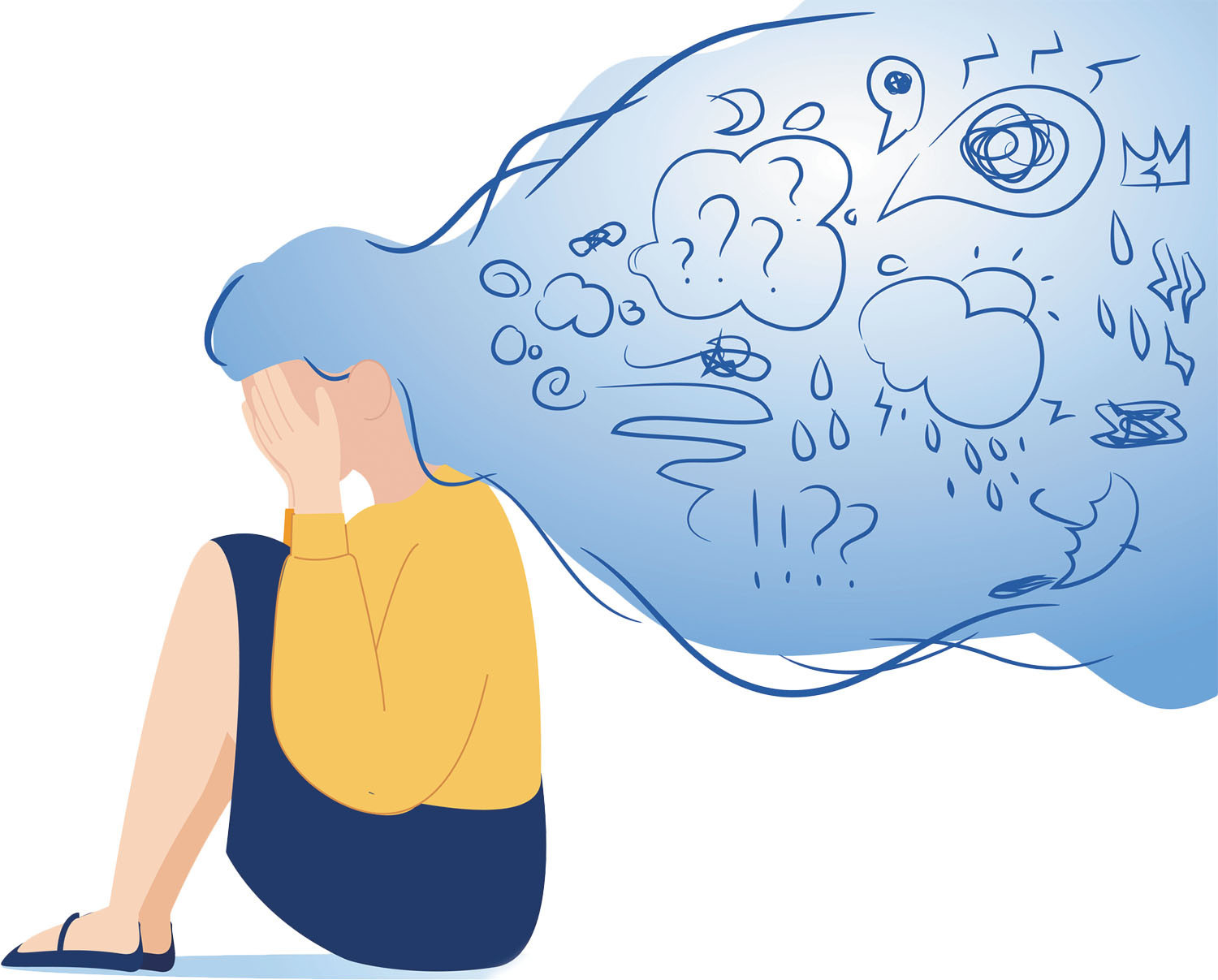Recognizing and easing the physical symptoms of anxiety
Simple strategies can reduce the headaches, upset stomach, and shortness of breath that may be triggered by emotional stress.

You've had headaches on and off, or possibly nausea, or muscle pain. It could be emotions, rather than a physical illness, driving your symptoms.
Blame your autonomic nervous system. This is a system in your body that you don't consciously control, but that regulates things like your heart rate, breathing, urination, and sexual function. It's also the system that reacts when you are under a physical threat. The autonomic nervous system produces your fight-or-flight response, which is designed to help you defend yourself or run away from danger.
When you are under stress or anxious, this system kicks into action, and physical symptoms can appear — headaches, nausea, shortness of breath, shakiness, or stomach pain. Doctors see it all the time — patients with real pain or other symptoms, but nothing is physically wrong with them.
In today's world, many people may be noticing new physical symptoms without realizing what's causing them. For some people, this situation is the start of a vicious cycle. Anxiety and stress themselves produce these physical symptoms, and on top of that your reaction to those symptoms can make them worse. The more you focus on them, the more alarmed you become, and the more intense your symptoms become. It can get really out of control and become so uncomfortable that you might not be able to do much more than sit and worry.
Identifying and easing anxiety
It's possible to become so fixated on the physical effects from your anxious state that you don't even realize you were anxious to begin with. So, how do you know if anxiety is causing your symptoms? And if it is, how can you feel better? Here are some tips to help you interrupt this cycle.
Stop and assess. The first step is to pause for a second and observe what's going on with your body. Think about what you are experiencing and whether it relates to a feeling of emotional upset or a reaction to something alarming or stressful. If your symptoms followed a stressful event or period of time, it's possible these emotions triggered your symptoms. Also, be alert to signs that you are tensing your muscles, which can also indicate a stress reaction.
Distract yourself. If you suspect anxiety is at the root of your physical symptoms, distraction can be a helpful tool. It's good to build a repertoire of things that can distract you from your focus on your body. Look at a photo album. Do the laundry. Even something as simple as watering the plants or putting together a jigsaw puzzle can help. This can fairly reliably get you out of a cycle of increased anxiety and increased physical symptoms. Very often, once you move on to another activity and take your mind off your symptoms, you'll start to feel better. Distractions are different for each person. Try different activities to figure out what takes your mind to a calm place.
Relax your body — or work it. To relieve stress, try some deep breathing or relaxation exercises. There are numerous online resources and smartphone apps that can help guide you through relaxation techniques. Physical activity can also help you relieve tension. Try to squeeze in a daily walk or a run.
Reassure yourself. If you believe your symptoms are being caused by anxiety, reassure yourself that what you are experiencing is not harmful or fatal. They're not serious, and they don't signal an impending medical disaster. The symptoms will pass when the anxiety eases.
Get checked. There is a difference between anxiety that triggers physical symptoms and physical symptoms that trigger anxiety. For example, people who are having an asthma attack and therefore having trouble breathing will likely feel anxious. But anxiety is not causing their shortness of breath. If you have a physical problem that does not resolve with relaxation or other techniques, contact your doctor to have it checked out.
Know when to seek help. Simple anxiety sometimes crosses the line and becomes an anxiety disorder. Signs that you might have a problem include shying away from activities because you are fearful, or being so preoccupied with worry that it affects your ability to function. If this sounds like you, it's time to seek some help. Anxiety disorders are very treatable using a variety of different approaches.
Image: © Mykyta Dolmatov/Getty Images
Disclaimer:
As a service to our readers, Harvard Health Publishing provides access to our library of archived content. Please note the date of last review or update on all articles.
No content on this site, regardless of date, should ever be used as a substitute for direct medical advice from your doctor or other qualified clinician.















